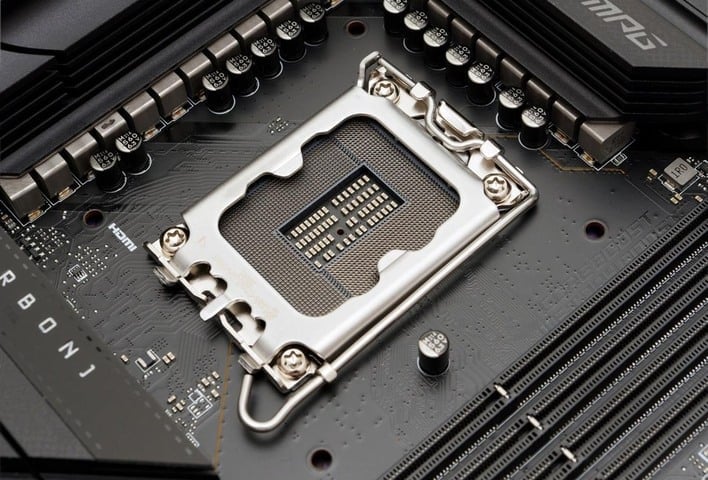If you want a desktop platform with a long upgrade path, you buy an AMD Ryzen, right? Not so fast, says Intel—the company is apparently readying one more round of CPU releases for its LGA 1700 platform. We first heart about “Bartlett Lake” back in February of this year when it was leaked by Chinese sources. A new processor design with up to twelve Raptor Cove P-cores and zero E-cores, Bartlett Lake apparently stems from Intel’s NEX division, which is in charge of network platforms, IoT, and connectivity.
At the time, we speculated that these parts probably wouldn’t be sold to end users or enthusiasts, and that they also might not work in extant LGA 1700 consumer motherboards. That’s because these CPUs are intended for edge computing and network infrastructure, first and foremost. However, new information from serial Intel leaker Jaykhin suggests exactly the opposite: the “Bartlett” design will indeed be sold directly to customers and supported on current LGA 1700 platforms.

The chart above seems to suggest that another product stack is headed for LGA 1700 featuring Core 5, Core 7, and Core 9 SKUs powered by Bartlett, as well as another set of Core 7, Core 5, Core 3, and Core Processor chips based on either Raptor Lake silicon or even older Alder Lake parts. The chart shows Bartlett coming in at a max of 125W for the PL1 value, which seems optimistic for a CPU with twelve “Cove” P-cores, although both the Core i9-13900K and Core i9-14900K had the same base power rating.
Strictly speaking, while 포시포시 confirmed that the chips will have 24MB of L2 cache, we don’t strictly know that they will be using Raptor Cove CPU cores. They could feasibly be based on an adaptation of the new Lion Cove core that Intel is introducing before long with the Lunar Lake design on mobile. Lion Cove in Lunar Lake doesn’t have Hyper-Threading, and Jaykihn confirmed on Xwitter that Bartlett does, but Intel said that Lion Cove cores for “P-core only” platforms will in fact support Hyper-Threading. Very interesting.
Even if Bartlett uses the tried and tested Raptor Cove CPU cores, it could be quite a compelling product. After all, Raptor Lake, whether 13th- or 14th-generation, is still damn fast, and a chip without E-cores will offer both more consistent performance as well as possibly having improved memory and cache performance thanks to an increased ring bus clock. Overclockers have long known that disabling the E-cores on a Raptor Lake CPU can earn you a few extra hundreds of MHz on the ring bus clock, improving multi-core and memory performance.
Unfortunately, we’ll apparently have to wait quite a while to see how Bartlett handles. According to Jaykihn, the hybrid members of the final LGA 1700 CPU lineup will be launching around the time of CES 2025 (“early Jan’25”), but the Bartlett CPUs won’t be available until Q3 of next year. That’s about a year away, so don’t hold your breath if you’re keen to upgrade, but those parts could still make a worthy upgrade for anyone on a 12th-gen machine—or with a failing Raptor Lake CPU.

